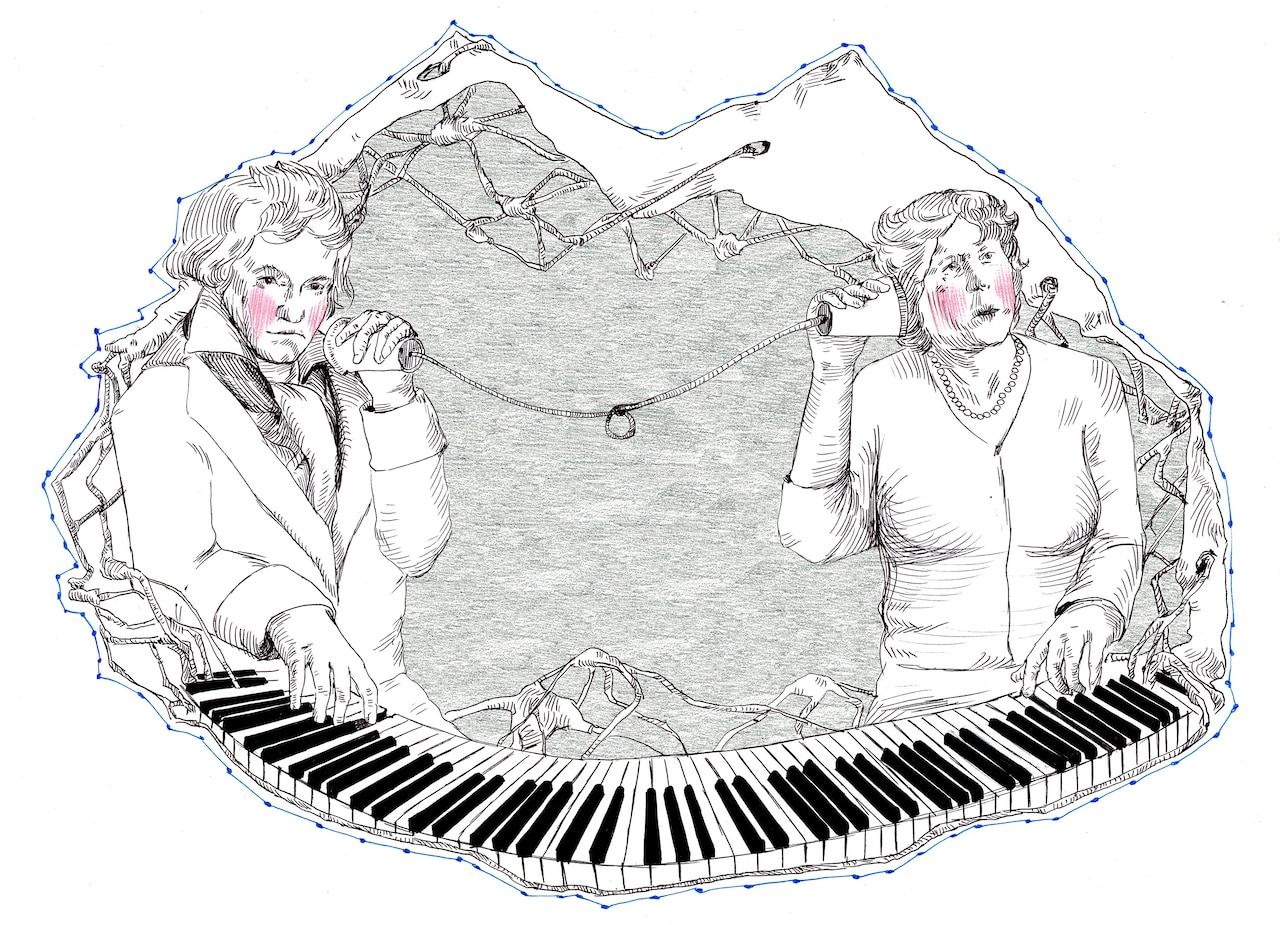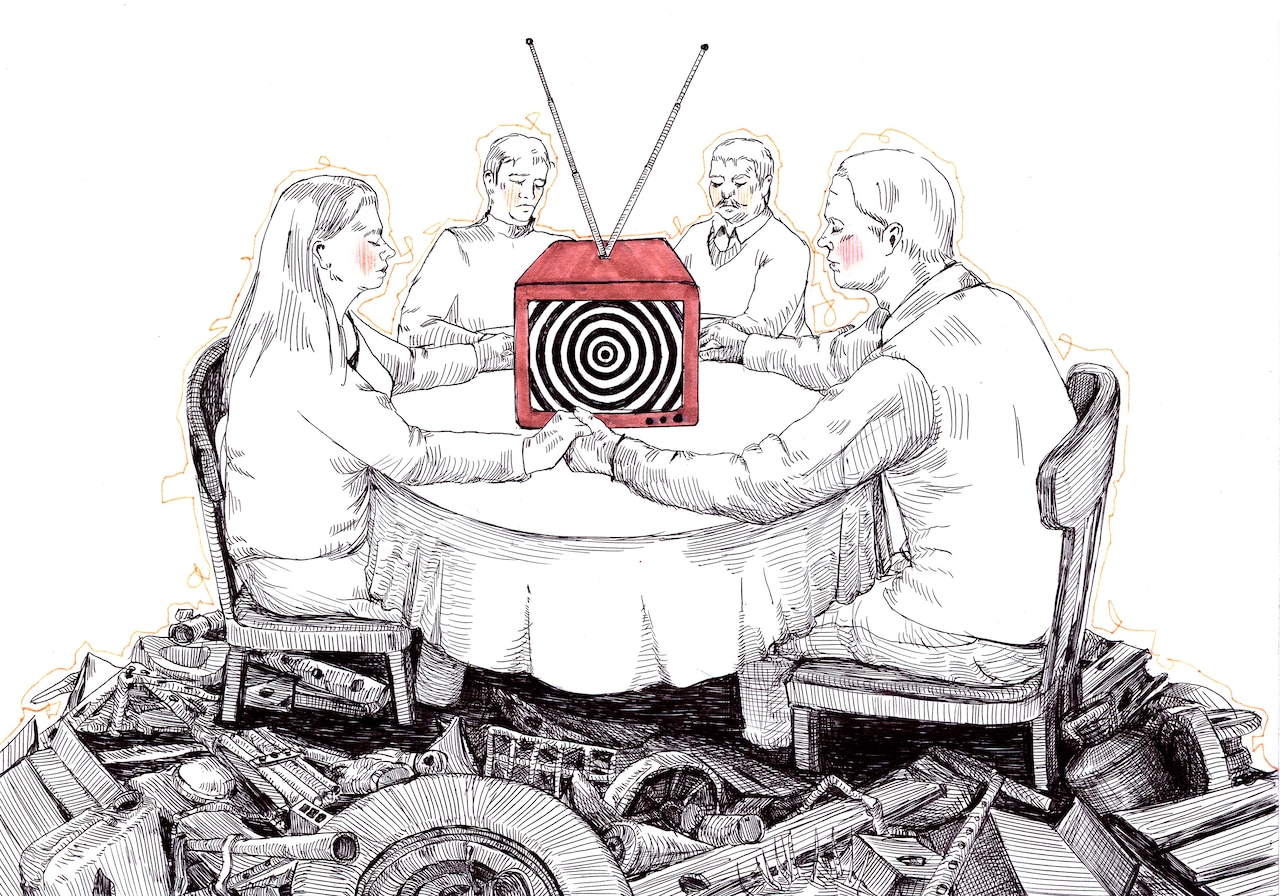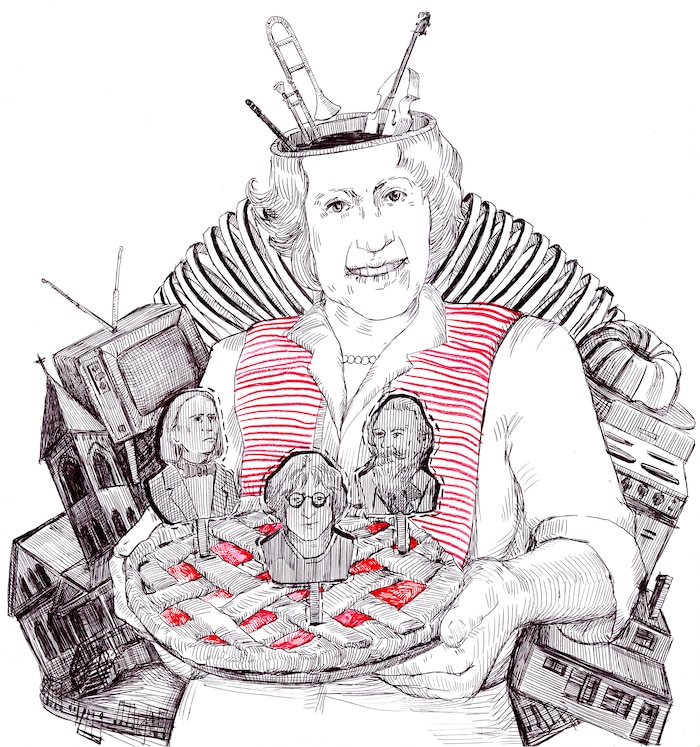
Rosemary Brown
The incredible true tale of an English woman who channelled the work of long dead composers during the psychedelic era
It was around 1923 that Rosemary Dickeson first met Franz Liszt. She was a seven-year-old girl, living in London. Liszt had been dead for nearly four decades. But there he was, wearing the black cassock that became his trademark after he took minor holy orders in the Roman Catholic Church. “When you grow up,” Liszt told Rosemary, “I will come back and give you music.”
The visit left Rosemary mystified but unfazed; she was already used to visits from “the so-called dead,” as she put it. But Franz Liszt was more than just another spirit. The Hungarian composer and pianist, one of history’s most prolific and prodigious virtuosi, had a plan: to send new works by himself and other famous classical music colleagues back into the realm of the living. Rosemary was to be the messenger.
She was something of a counterintuitive choice. After Liszt’s visit she took up piano lessons, but only, she said, for a short time, “a year or so.” She joined the Civil Service, worked for the Post Office and continued to play the piano on her own. She married Charles Brown, a freelance journalist, and became a housewife, raising two children.
At first, Lizst gave tips for Brown to bet on football matches, in order that she might afford Christmas presents for her children.
In 1961, though, her husband and mother both passed away. Rosemary was plunged into crises both emotional and financial. And Liszt once again made his presence known. Nothing musical at first; rather, the great musician gave tips for Brown to bet on football matches, in order that she might afford Christmas presents for her children. But, by 1964, Liszt and his fellow composers – Beethoven, Chopin, Brahms, Debussy and the like – were sending their works, guiding Brown’s fingers at her upright piano, or dictating notes and rhythms that she could only partially understand.
She joined a Spiritualist church and began playing the organ. “Even though I picked out the simplest hymns,” she recalled, “I would make the most appalling mistakes.” But it was there, one day, when Brown was trying out one of Liszt’s dictations, that a fellow church member heard her, quizzed her and put her in touch with the church’s Fellowship for Psychical and Spiritual Studies. Brown caused a sensation in London’s community of parapsychological enthusiasts.
However much she derided the attention, Rosemary Brown became a celebrity. The BBC took notice, and put her on television, the first of numerous such appearances. Notable musicians – Richard Rodney Bennett, Humphrey Searle – vouched for her music, attesting to its stylistic plausibility. (“Some of the music is awful,” Bennett said, “but some is marvelous.”) A record appeared: A Musical Seance, 16 piano works, performed by Brown and concert pianist Peter Katin. “She is no ‘hysterical’ spiritualist,” the liner notes insisted. “Rosemary Brown is just one of millions of housewives the world over.”
It was Liszt that provided Brown with her pièce de résistance. When, in 1969, the BBC once again came calling – this time for a radio documentary, to be broadcast on the network’s highbrow Third Programme – they asked if Brown could make contact while the tape rolled. “It was only a matter of minutes,” Brown recalled, “before there was Liszt, as reliable as ever, looking very calm and composed and telling me in his rather Victorian, slightly pedantic manner he was willing to attempt to communicate a new piece of music.” The result was “Grübelei” (“Brooding”), a winding, protean character piece, unrolling in a constant 5-against-3 rhythm.
Many of Brown’s transcriptions might be considered to be not much more than reasonably competent pastiche, but “Grübelei” was a different, more imaginative bit of musical invention. By the standards of 1886 at least. Impressionistic harmonies and simultaneous meters that would have been daring back then could only summon an old-fashioned sort of piquancy in 1969. It begged the question: In his lifetime, the one thing Liszt could never have been accused of being was old-fashioned. And yet, here he was, in response to Brown’s request for “something spectacular,” as she put it, seeming to take little if any notice of decades of musical innovation. Serialism, neo-Classicism, chance music, electronic music – apparently none of it was of any interest to someone who had been perhaps the most creatively restless musician of the 19th century.
Even more striking was “Revenant,” a short piece transmitted, through Brown, by Igor Stravinsky, a year after his death. Having, in the last two decades of his life, embraced serialism and atonality, the posthumous composer now seemed to revert back to his earliest days as a po-faced, late Romantic provocateur.
Of course, there was a ready explanation for this: Brown herself. The ubiquitous discounting of her own abilities – she wasn’t a very good pianist, she lacked musical training, the pieces always required editorial intervention to change her amateurish, note-by-note transcriptions into professionally correct musical grammar – let her and her composers off the hook. The stuck-in-history nature of Brown’s transmissions were simply the composers doing the best they could with the medium they had. Why try to force challenging music through an unsuitable channel?
I suppose the result might be called intellectually clever, but it is not music in my opinion.
But Brown’s supposed lack of skill was, maybe, not just a useful alibi, but a subtle riposte. Modern music was, increasingly, the domain of specialists. The twelve-tone method of Arnold Schoenberg became a branch of higher mathematics. New sounds emerged from recording laboratories and room-filling computers.
Brown herself had no truck with what she termed “so-called modern music.” Once, in Liszt’s presence, some of it came on the radio. “It gave me a good laugh,” she shrugged. Liszt, she reported, was less glib, but equally dismissive: “I suppose the result might be called intellectually clever, but it is not music in my opinion” – an opinion conveniently shared by Rosemary Brown and many like her, who, thanks to the persistence of the classical canon, could ignore the avant-garde in favor of the ever-present past.
Romanticism and even Classicism, once-daring music rendered pleasant through time and repetition, had been purposefully cast aside by the avant-garde. Brown brought it back, made it “new.” Her proclaimed mediocrity only emphasized her coup. The modern composers, the experts, working in styles of unprecedented theoretical and conceptual complexity, only baffled the middlebrow public. But Rosemary Brown, who mucked up the hymns at church, could commune with the masters.
The kind of Spiritualism Brown exemplified was itself old-fashioned, but it dovetailed with the era. In 1964 – the same year Liszt’s plan began to manifest through Brown – Timothy Leary, Ralph Metzner and Richard Alpert published The Psychedelic Experience. It is easy to imagine how Brown’s fame could flourish in such psychedelic soil, how such a free-your-mind ethos could lend her startling claims an aura of sought-after transcendence.
To be sure, Leary and his cohorts preached a different gospel than Spiritualism’s gone-today-here-tomorrow promise. The original psychedelic goal was the death of the ego, not its post-earthly persistence. “Do not be attached to your old human self,” The Psychedelic Experience warned.
But psychedelia was soon and inevitably popularized, commoditized and otherwise compromised. What began as a practice soon became an aesthetic, as psychedelic notions and imagery pervaded and promoted a self-conscious revolution in popular music. Brown’s correspondents – still attached to their human selves, if not their human bodies – took notice, becoming “quite intrigued with pop music,” she reported. “They think it is quite fun and good for young people, providing the music doesn’t become depraved, and they are a little worried that some of it is going this way.” (Indeed, psychedelic culture would incorporate death not in Spiritualism’s optimistic guise, but via the frisson of the occult.)
In the 1980s, Brown began to receive messages from another dead composer, John Lennon.
By the time Brown’s musical transmissions made it onto record, even diminished, psychedelia-lite was pretty much finished. A Musical Seance, released in 1970, went on sale among a host of valedictions: The Beatles’ Let It Be, Simon and Garfunkel’s Bridge Over Troubled Water, Bob Dylan’s self-abnegating Self Portrait. Before the year ended, Jimi Hendrix and Janis Joplin would be dead.
Spiritualism, historically, had always flourished in the wake of death: the Crimean War, the American Civil War, World War I. Brown’s communications from the spirit world were like a smaller, nostalgic pendant to those earlier reckonings: a sideways obituary for the Summer of Love.
But, then again, Brown’s psychic connection was more incidental than inherent to the era. In the 1980s, Brown began to receive messages from another dead composer, this one a veteran of the psychedelic ’60s: John Lennon. According to Brown, he had a message for his fans: “Don’t mess around with drugs.” It was just what one might expect a middle-aged, middle-class housewife to say.
Such expectations had infiltrated Brown’s story from the start. The rhetoric and publicity surrounding her – even her own writing – always carried a heavy hint of class prejudice. The liner notes from that first record were typical. Brown “lives in one of the poorer suburbs of London”; her “musical background is so undeniably limited”; one is “disarmed” by her “utter normality.” The notes included an assessment by Dr. William Tenhaeff, of the University of Utrecht. “When I visited her home towards the end of 1969,” Tenhaeff assured us, “I was struck by both the cheerlessness of the district and the dilapidated condition of the home itself.”
It was, again, part and parcel with her amateur image – an amplification of it, in fact. Not only was she untrained, she was unsophisticated. She was humble and poor. She couldn’t possibly have been able to come up with all that music on her own.
The theories surrounding Brown are many. She was a savant; she was a charlatan. She was subconsciously recalling and reworking fragments of the standard repertoire that she had come across in her own piano practice. The death of her husband caused a psychological break, producing hallucinations and fugue states that manifested themselves as musical composition.
But there is another possibility, one that doesn’t so much explore the possibilities of another dimension of existence as reveal the limitations of this one. And that is to admit one more person to Brown’s stable of composers: Rosemary Brown herself. What if she was simply a late bloomer who, due to the happenstance of her birth and station and gender, never had the proper chances for higher education or professional development? It is, perhaps, a telling projection that when Brown was visited by Clara Schumann – historically, an accomplished composer in her own right – it was only to drop off works by her husband Robert.
Wives and mothers, in Brown’s worldly experience, did not qualify for the canon. But, whether by way of an impressively maintained ruse or a self-instilled belief, she hit upon a story that could bypass all that. Rosemary Brown, a housewife with musical aspirations, would, more likely than not, have been shut out by a musical establishment that prized conservatory training and disdained outmoded 19th-century styles. Rosemary Brown, medium, saw her music performed, recorded, broadcast and published.
And the music kept coming, though not always on earthly schedule. (The renowned organist Gillian Weir tried to commission a work, through Brown, from Liszt, but the muse – be it Liszt’s or Brown’s – was not to be so readily commanded.) Brown died in 2001, sincere and (perhaps ironically) down-to-earth until the end. Since then, her composers have been silent – as has Brown herself. The lack of new music might put the lie to any claims for Brown’s clairvoyance. Then again, it might be another indictment of the earthly plane.
Tenhaeff’s report in the liner notes of A Musical Seance were followed by a brief introduction given to Brown by the eminent British theorist and commentator Sir Donald Tovey, who died in 1940. “Humanity is now moving into an age of increasing emancipation from many of its past limitations,” Tovey wrote, but “Man’s greatest problem is still himself and his orientation to his fellow-beings.”
For Tovey, the most important thing about Brown’s music was not its fidelity, or its style, or even whether it was good or bad. It was “the implications relevant” to the music’s purported source. “The knowledge that incarnation in your world is but one stage in man’s eternal life should foster policies which are more far-seeing than those frequently adopted at present,” Tovey chided, “and encourage a more balanced outlook regarding all matters.”
Header image © Sasha Denisova



